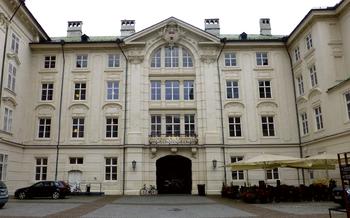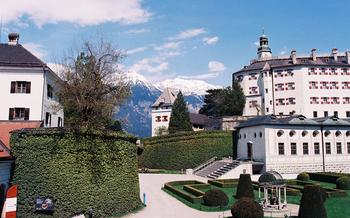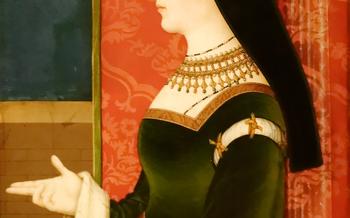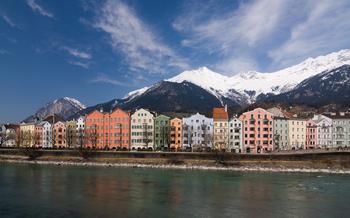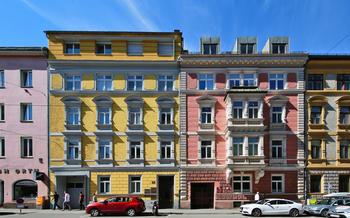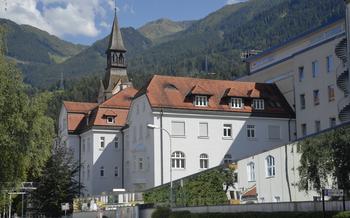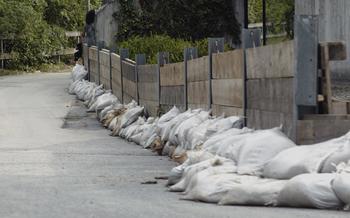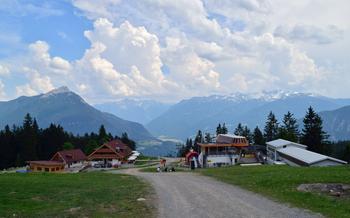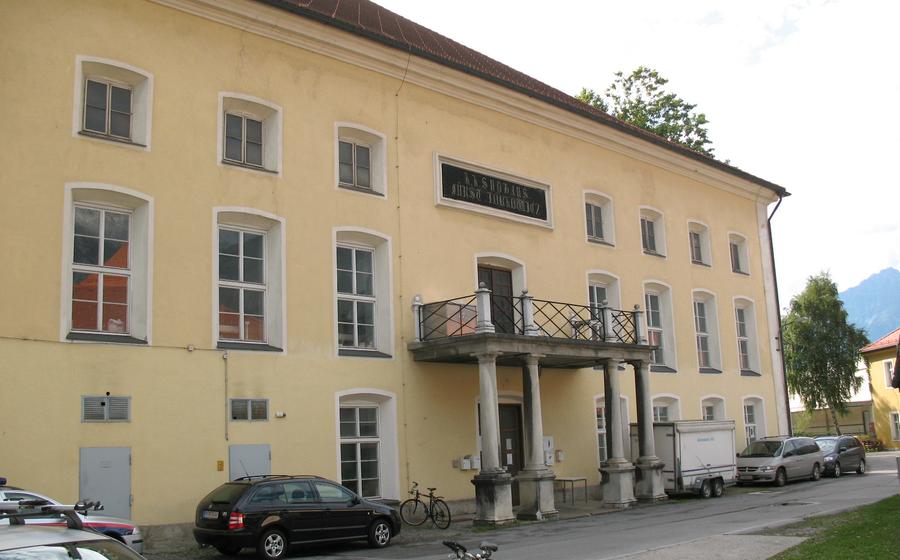
Imperial Palace (Hofburg Innsbruck)
- Exploring the Imperial Palace
- Hofburg's Imperial Apartments
- Giant's Hall: A Masterpiece of Renaissance Architecture
- Hofkirche (Court Church): A Sacred Haven
- Silver Chapel: A Treasury of Artistic Masterpieces
- Hofburg Museum: A Journey Through History
- Imperial Gardens: A Tranquil Oasis
- Hofburg's Christmas Market: A Festive Extravaganza
- Imperial Café: A Taste of History
- Hofburg Souvenir Shop: A Memorable Keepsake
- Accessibility and Facilities
- Photography and Videography
- Insider Tip: Secret Passageways
Exploring the Imperial Palace
Immerse yourself in the grandeur of the Imperial Palace through guided or self-guided tours. Guided tours offer a comprehensive journey through the palace history, showcasing its most significant rooms and providing insights into the lives of its former occupants. On the other hand, self-guided tours allow you to explore at your own pace, choosing the rooms and exhibits that captivate your interest.
Highlights of the palace interior include the Giant's Hall, with its impressive ceiling paintings and historical significance, and the Hofkirche (Court Church), a Gothic masterpiece housing the elaborate tomb of Emperor Maximilian I. Don't miss the Silver Chapel, showcasing exquisite silver altarpieces representing the Habsburg dynasty.
Depending on your interests and time constraints, plan for a visit lasting anywhere from one to three hours. Take this opportunity to step back in time and experience the opulence and grandeur of the Imperial Palace, immersing yourself in its rich history and cultural legacy.
Hofburg's Imperial Apartments
The Imperial Apartments of the Hofburg offer a glimpse into the private lives of the Habsburgs. Visitors can explore a series of lavishly decorated rooms, each with its own unique history and significance. The Imperial Bedroom, for example, is adorned with intricate tapestries and furniture from the 18th century. The Music Room features a beautiful grand piano and elegant chandeliers. The State Dining Room is where the Habsburgs hosted their official guests, and its walls are adorned with portraits of the imperial family.
The apartments are a treasure trove of historical artifacts, including furniture, paintings, and sculptures. Many of the pieces have been preserved in their original condition, allowing visitors to experience the opulence and grandeur of the Habsburg era.
The tour of the Imperial Apartments provides an intimate glimpse into the lifestyle of one of Europe's most powerful dynasties. Visitors can learn about the Habsburgs' daily routine, their personal interests, and their relationships with each other. The apartments offer a fascinating insight into the world of the Habsburgs, and they are a must-see for anyone interested in history and culture.
Some of the notable rooms in the Imperial Apartments include:
- The Empress's Bedroom, which features a beautiful canopy bed and a dressing table with a mirror that is said to have been used by Empress Maria Theresa.
- The Emperor's Study, which contains a large desk, a bookcase, and a globe that was used by Emperor Franz Joseph I.
- The Children's Room, which is decorated with toys and games from the Habsburg children's collection.
- The Secret Passageway, which was used by the Habsburgs to escape from the palace in times of danger.
Giant's Hall: A Masterpiece of Renaissance Architecture
The Giant's Hall, also known as the Riesensaal, is a masterpiece of Renaissance architecture and one of the most impressive rooms in the Hofburg. It was built between 1553 and 1563 by Emperor Ferdinand I, who wanted to create a grand reception hall to impress his guests. The hall is 57 meters long, 17 meters wide, and 13 meters high, making it one of the largest halls in Europe. The ceiling is decorated with elaborate paintings by the Italian artist Alessandro Alberti, which depict scenes from the life of the emperor. The hall was used for many important events, including weddings, banquets, and balls. It was also used as a ballroom during the Congress of Vienna in 1814-
The ceiling paintings in the Giant's Hall are a particular highlight. They were painted by Alessandro Alberti, an Italian artist who was commissioned by Emperor Ferdinand I. The paintings depict scenes from the life of the emperor, including his coronation, his marriage, and his triumphal entry into Vienna. The paintings are a masterpiece of the Renaissance style, and they are a testament to the skill of Alberti.
The Giant's Hall is also significant for its historical events. It was used for many important events, including weddings, banquets, and balls. It was also used as a ballroom during the Congress of Vienna in 1814-The Congress of Vienna was a meeting of European diplomats who were tasked with redrawing the map of Europe after the Napoleonic Wars. The Giant's Hall was used for the opening ceremony of the Congress, and it was also used for many of the negotiations that took place during the Congress.
The Giant's Hall is a must-see for anyone visiting the Hofburg. It is a beautiful and impressive room that is full of history. The ceiling paintings are a masterpiece of the Renaissance style, and the hall is significant for its historical events.
Hofkirche (Court Church): A Sacred Haven
The Hofkirche, or Court Church, is a captivating example of Gothic architecture, its intricate carvings and sculptures narrating the stories of saints, biblical figures, and historical events. This sacred space serves as the final resting place of Emperor Maximilian I, whose elaborate tomb, adorned with 28 larger-than-life bronze statues, dominates the chancel. The church's historical and cultural significance is further enriched by its connection to the imperial family and the many events that transpired within its walls. A visit to the Hofkirche offers a glimpse into the spiritual and ceremonial heart of the Habsburg dynasty.
Silver Chapel: A Treasury of Artistic Masterpieces
Among the many treasures housed within the Hofburg Innsbruck, the Silver Chapel stands out as a testament to the artistic prowess and religious devotion of the Habsburg dynasty. Constructed during the reign of Emperor Maximilian I, the chapel's walls are adorned with exquisite silver altarpieces, each a masterpiece of craftsmanship and artistry.
The main altarpiece, crafted by Colin of Mechelen, depicts scenes from the life of Christ and is considered a prime example of late Gothic art. Intricate carvings and delicate filigree work bring the biblical stories to life, creating a sense of awe and wonder.
Beyond its aesthetic beauty, the Silver Chapel holds deep symbolic meaning, representing the Habsburgs' devotion to the Catholic faith and their claim to divine authority. The silver altarpieces, with their gleaming surfaces and intricate details, serve as a reminder of the dynasty's wealth and power.
Visitors to the Silver Chapel are transported back in time, immersing themselves in the grandeur and spirituality of the Habsburg court. The chapel's atmosphere, infused with history and artistic mastery, invites contemplation and reflection, making it a truly unique and unforgettable experience.
Hofburg Museum: A Journey Through History
Within the grand walls of the Hofburg, the Hofburg Museum invites visitors to delve into the rich history of the Habsburg dynasty and the imperial past of Austria. An extensive collection of historical artifacts, immersive exhibits, and interactive displays brings to life the stories of emperors, empresses, and the events that shaped the course of Austrian history.
Through carefully curated exhibits, visitors can gain Einblicke in das Leben der Habsburger, exploring the personal lives, achievements, and challenges faced by the imperial family. The museum showcases a diverse range of artifacts, from royal attire and jewelry to furniture, paintings, and sculptures, each piece offering a glimpse into the grandeur and opulence of the Habsburg court.
Interactive exhibits enhance the museum experience, allowing visitors to engage with history in a dynamic way. Touchscreens, multimedia presentations, and hands-on activities bring the past to life, providing a deeper understanding of the Habsburg era and its impact on Austria and Europe.
A visit to the Hofburg Museum is an educational and informative journey through time, offering a comprehensive insight into the history and legacy of one of Europe's most influential dynasties.
Imperial Gardens: A Tranquil Oasis
Nestled amidst the grandeur of the Hofburg complex, the Imperial Gardens offer a serene escape from the bustling city. With a history dating back to the 16th century, these gardens were once a private retreat for the imperial family, providing a tranquil oasis amidst the political and administrative duties of the Habsburg court.
Today, the gardens are open to the public, inviting visitors to stroll along its manicured paths, admire the vibrant flowerbeds, and soak in the tranquility of this historic green space. Visitors can explore the various sections of the garden, each with its own unique charm. The Rose Garden, with its fragrant blooms and colorful displays, is a particular highlight. The Orangery, with its exotic plants and citrus trees, offers a glimpse into the horticultural interests of the imperial family.
The gardens also feature several statues, fountains, and sculptures, adding to their artistic and cultural significance. Take a leisurely walk, relax on a bench beneath the shade of a tree, or simply soak in the peaceful atmosphere of this hidden gem. The Imperial Gardens are a delightful retreat, offering a respite from the hustle and bustle of the city and a chance to connect with the rich history of the Hofburg.
Hofburg's Christmas Market: A Festive Extravaganza
During the festive season, the Hofburg transforms into a magical winter wonderland, hosting one of the most enchanting Christmas markets in Austria. The historic palace provides a breathtaking backdrop to the rows of wooden stalls adorned with twinkling lights and festive decorations. The air fills with the irresistible aromas of roasted chestnuts, gingerbread, and mulled wine, creating a warm and inviting atmosphere.
Visitors can browse a variety of unique gifts and handmade crafts, from traditional Austrian ornaments to exquisite jewelry and clothing. Local artisans showcase their skills, offering a glimpse into the rich cultural heritage of the region. Culinary delights abound, with stalls selling freshly baked pastries, sweet treats, and savory snacks. Indulge in a warm cup of Glühwein, a traditional Austrian mulled wine, as you soak in the festive ambiance.
The Hofburg Christmas Market is a feast for the senses, offering a unique blend of history, culture, and festive cheer. Take a break from exploring the palace to immerse yourself in the magic of the season, surrounded by the grandeur of the imperial residence.
Imperial Café: A Taste of History
Indulge in a culinary journey through time at the Imperial Café, housed within the historic walls of the Hofburg Palace. Step into an ambiance reminiscent of imperial grandeur, where elegant chandeliers illuminate the room and plush seating invites you to relax. The café's menu pays homage to traditional Viennese cuisine, offering a delectable array of pastries, cakes, and savory dishes that have delighted generations of visitors.
Savor the iconic Viennese Sachertorte, a rich chocolate cake with a velvety apricot jam filling, or indulge in the mouthwatering Apfelstrudel, a flaky pastry filled with tender apples and a hint of cinnamon. Pair your sweet treat with a steaming cup of Viennese coffee, expertly brewed to perfection. As you savor the flavors, imagine the conversations and laughter that have filled this space throughout history.
The Imperial Café offers more than just a culinary experience; it's a chance to immerse yourself in the rich heritage of the Hofburg Palace. Take a break from your exploration of the palace's wonders and enjoy a leisurely coffee break in this historic setting. Let the elegance of the surroundings transport you back in time, as you soak in the atmosphere and indulge in the flavors of imperial Vienna.
Hofburg Souvenir Shop: A Memorable Keepsake
The Hofburg Souvenir Shop, located within the palace grounds, offers a treasure trove of unique and memorable souvenirs for visitors to cherish. From exquisite replicas of imperial jewelry to intricately designed postcards and magnets, there's something for every taste and budget.
History buffs can delve into the past with replicas of ancient coins, stamps, and documents that tell the story of the Habsburg dynasty. Art enthusiasts can find inspiration in reproductions of famous paintings and sculptures that adorn the palace walls.
For those seeking a taste of imperial luxury, the shop offers a range of gourmet products, including handmade chocolates, jams, and honey from the palace gardens. Visitors can also choose from a selection of traditional Austrian handicrafts, such as hand-painted ceramics, intricate lacework, and carved wooden figurines.
Every purchase made at the Hofburg Souvenir Shop not only serves as a reminder of the visit but also contributes to the preservation and maintenance of this magnificent imperial residence. Whether you're looking for a small token to remember your time in Innsbruck or a special gift for a loved one, the Hofburg Souvenir Shop has something for everyone.
Accessibility and Facilities
The Hofburg Innsbruck offers a range of facilities and services to ensure an inclusive and enjoyable visit for all. Wheelchair users and visitors with disabilities can explore the palace with ease thanks to designated accessible entrances, ramps, and elevators. Guided tours specifically designed for visitors with disabilities are also available, providing detailed descriptions and insights into the palace's history and architecture.
To further enhance the visitor experience, the Hofburg offers audio guides in multiple languages, including English, German, Italian, and Spanish. These audio guides provide a comprehensive and informative commentary on the palace's highlights, allowing visitors to explore at their own pace and in their preferred language.
Photography and Videography
When visiting the Hofburg Innsbruck, capturing the beauty and grandeur of the palace through photography and videography is a fantastic way to preserve your memories. However, it is essential to be mindful of the following guidelines to ensure a respectful and enjoyable experience for all visitors:
-
Flash Photography: Please refrain from using flash photography inside the palace to protect the artwork and artifacts from damage.
-
Tripods and Selfie Sticks: To ensure the safety of visitors and the preservation of the palace's interiors, tripods and selfie sticks are not permitted inside.
-
Respecting Privacy: Be considerate of other visitors when taking photographs or videos. Avoid capturing people in your shots without their consent.
-
Commercial Use: If you intend to use your photographs or videos for commercial purposes, obtaining permission from the Hofburg Innsbruck administration is necessary.
-
Sharing Your Experience: Share your captured moments with the world by tagging the palace on social media (@hofburginnsbruck) and using relevant hashtags. Your images and videos can help promote the palace and inspire others to visit this remarkable imperial residence.
Insider Tip: Secret Passageways
For those seeking an extraordinary experience, the Hofburg Innsbruck holds a hidden treasure – a network of secret passageways and staircases that once served as private routes for the imperial family and their trusted entourage. These hidden corridors offer a glimpse into the lesser-known corners of the palace, revealing a world of intrigue and mystery. Visitors can uncover the secrets of the imperial residence by embarking on a guided tour that takes them through these hidden passageways, providing a unique perspective on the palace's history and architecture. Exploring these secret routes enhances the overall experience, offering a deeper understanding and appreciation of the Hofburg Innsbruck's rich heritage.
